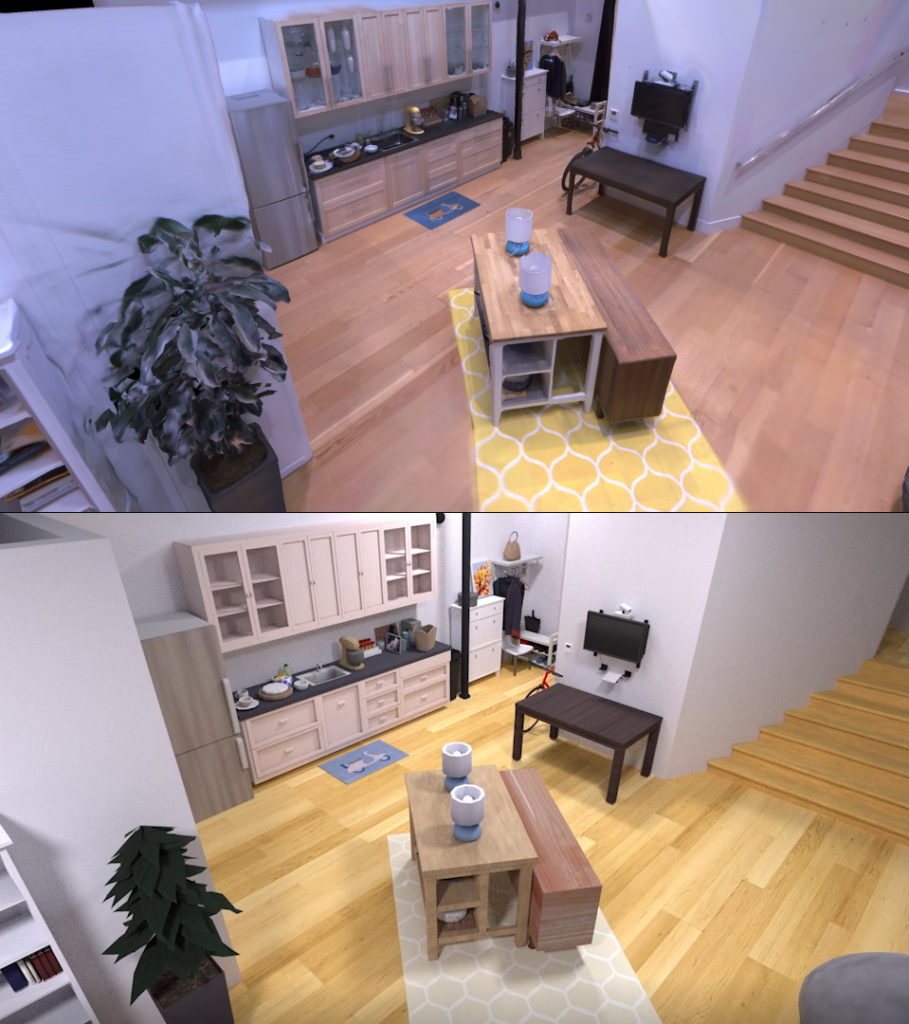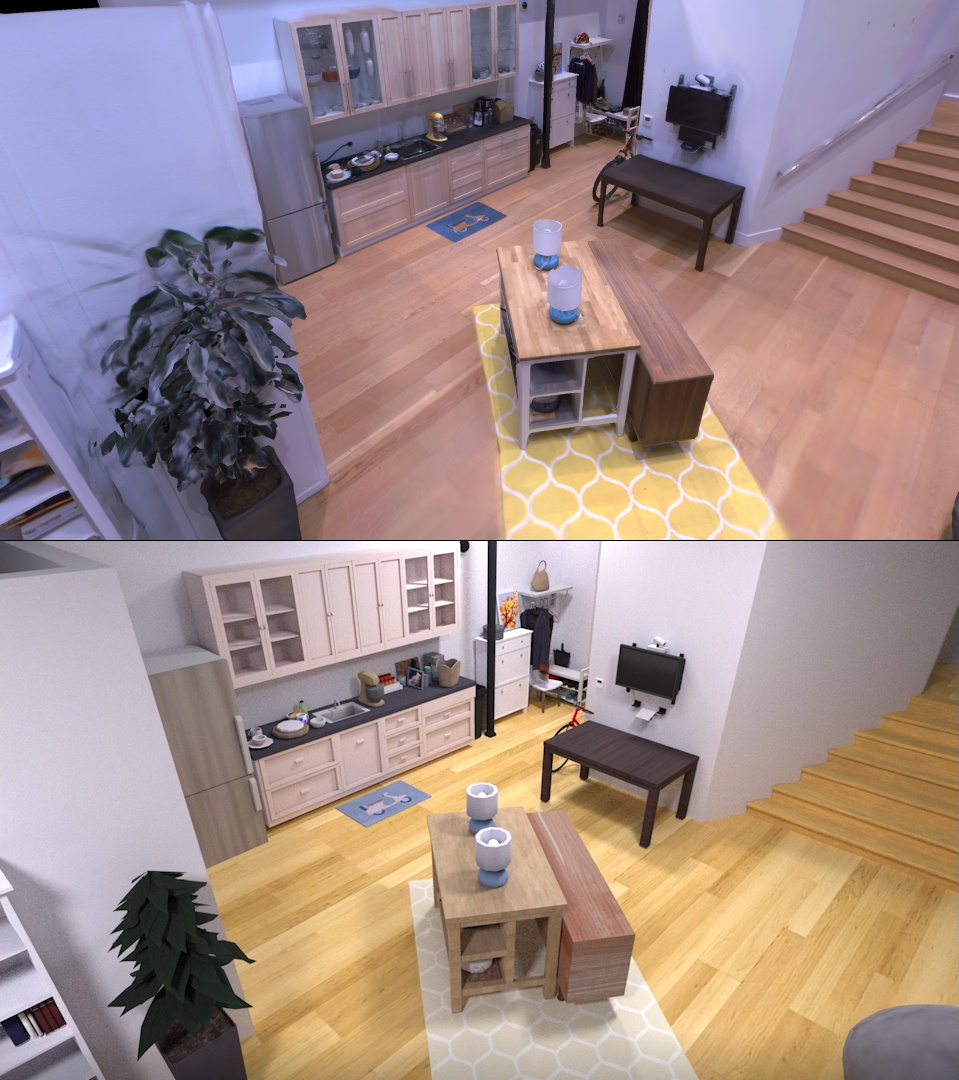
To train a robot to navigate a house, you either need to give it a lot of real time in a lot of real houses, or a lot of virtual time in a lot of virtual houses. The latter is definitely the better option, and Facebook and Matterport are working together to make thousands of virtual, interactive digital twins of real spaces available for researchers and their voracious young AIs.
On Facebook’s side the big advance is in two parts: the new Habitat 2.0 training environment and the dataset they created to enable it. You may remember Habitat from a couple years back; in the pursuit of what it calls “embodied AI,” which is to say AI models that interact with the real world, Facebook assembled a number of passably photorealistic virtual environments for them to navigate.
Many robots and AIs have learned things like movement and object recognition in idealized, unrealistic spaces that resemble games more than reality. A real-world living room is a very different thing from a reconstructed one. By learning to move about in something that looks like reality, an AI’s knowledge will transfer more readily to real-world applications like home robotics.
But ultimately these environments …read more
Source:: TechCrunch Gadgets

 Previous post
Previous post
 Next post
Next post